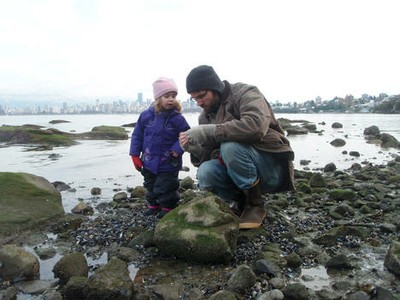As ocean temperatures rise and the water becomes more acidic, everything from shellfish to real estate is at risk of eradication. — By Daniel Wood, October 20, 2011
“I have very bad news for you. Are you man enough to take it?”
“God, no!” screamed Yossarian. “I’ll go right to pieces.”
—Joseph Heller, Catch-22
In 2001, Ian Walker, a 40-year-old associate professor of geography at the University of Victoria, began walking the desolate, kelp-strewn beach south of Rose Spit, the northeasternmost tip of Haida Gwaii. And each year that followed, he returned. An expert in coastal erosion, he’d look at 1990s Geological Survey of Canada air photos of the place and look at the modern shoreline bluffs and feel amazed.
In places, 30 metres of land had disappeared in a year. Could it be connected, he asked himself, to anecdotal reports from local Haida that North Pacific storms were getting worse? Or that the sea level was rising? The latest predictions were a rise of one to two metres this century. If these things were so, what did it mean for the more than 300,000 people who live below sea level and behind dikes in Richmond and Delta?
The news gets worse.
In 2010, Rob Saunders, long-time CEO of Qualicum Bay’s Island Scallops, set out 12 billion young scallop larvae to be nourished in the Strait of Georgia near Nanaimo. But as the weeks passed, 99.95 percent of them died. “It was catastrophic!” he says today. He suspected a biological cause: a toxin or disease. But chemical testing revealed that the ocean was far more acidic—and far more saline—than ever recorded. It was the water itself that was lethal.
Up and down the coast, others in the $38-million-a-year B.C. shellfish industry were seeing the same thing. Saunders didn’t fully appreciate then that ocean acidity is increasing exponentially worldwide. Or that this acidity most affects the sea’s smallest creatures—larvae, phytoplankton, zooplankton, and krill—the very animals that sustain the entire marine food chain.
The news gets worse.
The story you are about to hear is complex, and has mostly been submerged by the discussion about atmospheric carbon dioxide and global warming. It has only been in the past few years that scientists have begun to grasp how the world’s dramatically warming and acidifying oceans—covering four-fifths of the planet—may have far more influence on the near future than previously understood. Virtually all local marine scientists say the latest data reveals something ominous happening. But the forces are many, the data thin. And research funding is limited. The metaphor I hear most frequently from experts is the proverbial “elephant in the room” image: something so big, so hard to measure, and so unpredictable that it’s difficult to discern the outcome.
Read the rest of this story on Straight.com.

UBC zoologist Chris Harley (above) says the marine food chain could face collapse; meanwhile, ocean warming and acidification will result in larger sea stars eating mussels with thinner shells.